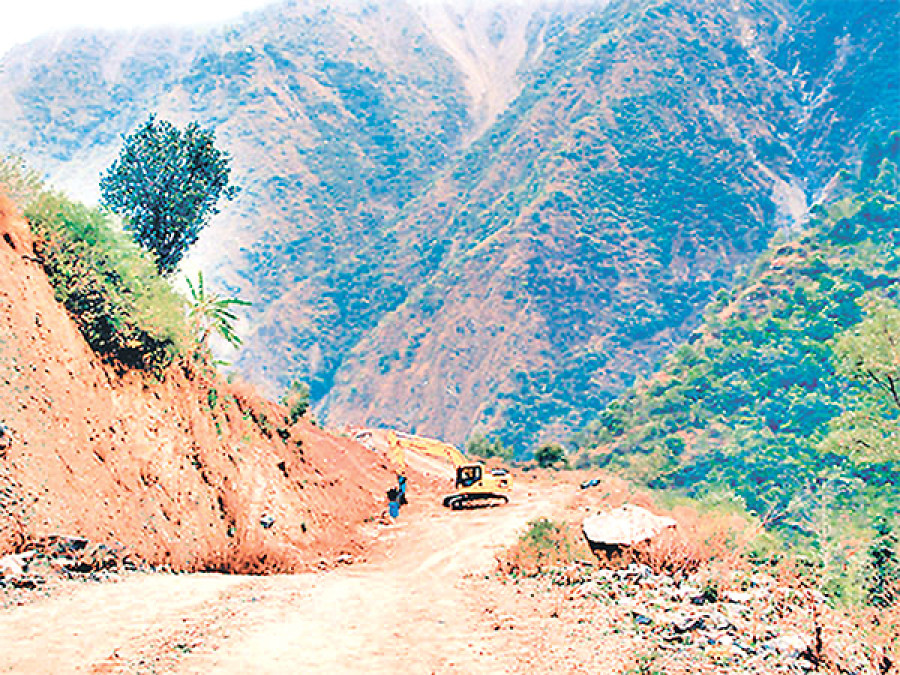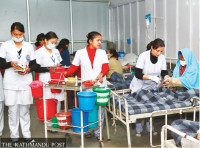Miscellaneous
Ktm to Nijgadh in under 1 hour: DPR
Travellers will be able to zip between Kathmandu and Nijgadh in less than 1 hour after the Fast Track is built, says the detailed project report (DPR) of the mega highway project.
Sanjeev Giri
The DPR was prepared by an Indian consortium consisting of Infrastructure Leasing and Financial Services (IL&FS) Transportation Networks, IL&FS Engineering and Construction and Suryavir Infrastructure Construction. The combine is also likely to bag the construction contract for the project.
Officials said that the earlier estimated travel time had been slashed due to enhanced standards of the highway. Technicians had previously projected that it would take 1 hour 15 minutes to traverse the distance. Vehicles plying the expressway will have to cruise between a minimum speed of 65 kmph and a maximum speed of 120 kmph.
“We had instructed the Indian firm to make sure that the travel time from Nijgadh to Kathmandu is kept within an hour,” said Satyendra Shakya, chief of Kathmandu-Nijgadh Fast Track Project. “The company has prepared the plans accordingly.”
According to Shakya, the main motive behind keeping the travel time at around an hour is to make sure that the SIA being developed in Nijgadh is feasible.
“It might annoy travelers if it takes more than an hour to travel to Kathmandu from Nijgadh,” said Shakya, adding that the assurance that the expressway would connect Kathmandu in less than an hour would help the airport project.
The Fast Track project’s DPR also states that the express highway will be built as per the Primary Class of the new Asian Highway Standard. The Asian Highway Standard has been classified into four categories, Primary, Class I, Class II and Class III. The Primary Class refers to access-controlled motorways used exclusively by automobiles. Access to the motorway is at grade-separated interchanges only.
“We did a thorough study before selecting the Primary Class. This is the best among the different categories of the Asian Highway Standard,” said Minister for Physical Infrastructure and Transport Bimalendra Nidhi.
“It will be a model project for Nepal.” Nidhi added that the width of the lane had been expanded to 3.75 metres from 3 metres as the government had decided to go for the Primary Class instead of Class I.
According to Shakya, the four-lane roadway can be expanded to six lanes as per need in the days to come. The ministry is of the view that the highway will have to be expanded to handle the expected rise in traffic after the SIA is constructed. There will be seven bridges on the expressway.
As per the DPR, the expressway will have provisions for a fire controlling mechanism, medical support post, ambulance, traffic support post, crane and diversions or alternative points in the tunnel.
Outside the tunnel, the highway will feature telecommunication systems at intervals of 2 km to provide information about accidents and monitor traffic. There will also be three helipads along the highway.
Moreover, the government aims to develop the project in way that will facilitate the construction of other infrastructure in the future. According to Shakya, the government can lay drinking water pipes, telecommunication optical fibres, gas pipelines and electricity transmission lines using the land acquired by the government for the road project.
As per a feasibility report prepared by the Asian Development Bank (ADB) in 2014, the road project was estimated to cost $960 million. The latest DPR has given a price tag of $1,117 million. “The prices given by the ADB’s feasibility report and the Indian firm’s DPR aren’t much different considering the added scope of the work,” Shakya said.




 7.12°C Kathmandu
7.12°C Kathmandu










